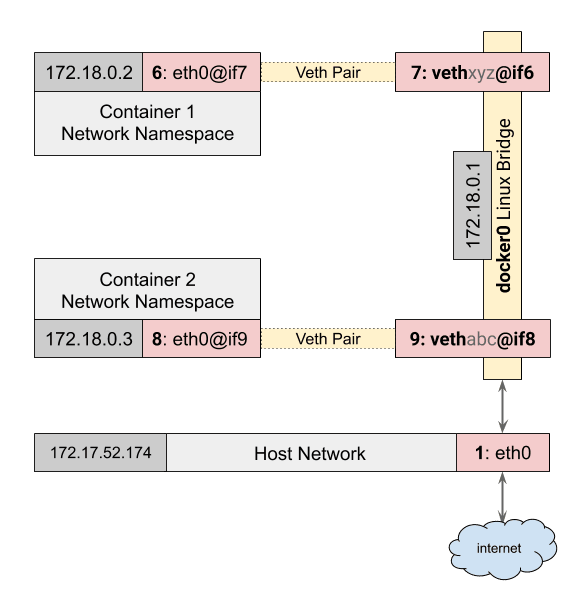

The host has a changing IP address (or none if you have no network access).

Inside the application is also the latest greatest Docker engine, and autoupdates to make it easy to keep uptodate.Īlthough the app only runs Linux containers at present, the Docker engine is gaining support for non-Linux containers, so expect to see updates in this space. The Docker container platform is always running on top of the host operating system. To do this, Docker Desktop for Mac intercepts traffic from the containers. We've also used some unikernel libaries from MirageOS to provide the filesystem and networking "semantic translation" layers between OSX and Linux. Most of the processes do not need root access and run as the user. Now that you have Docker installed and running, let’s discuss what you can do with it.
#Docker for mac access other containers windows#
Please refer to the Resources section if using Docker for Windows or Docker for Mac for more information. Differences would be in things like how directories on the host are bind mounted into the container. Depending on the OS, you may need to configure your Docker instance to use 4.00 GB of memory for all containers to run properly. So yes, it'll work pretty much exactly the same out of the box on Mac, Windows or Linux. to replicate a DynamoDB table structure to be able to run your test on a different table, heres a solution. On the other hand, if you use it extensively for many containers at the same time, it makes sense for you to assign more resources for Docker. On Mac and Windows, Docker is running a Linux VM in the background, and the containers are executed inside there. Access MacOS host from a docker container. The filesystem sharing maps OSX volumes seamlessly into the Linux container and remaps MacOS X UIDs into Linux ones (no more permissions problems), and the networking publishes ports to either `docker.local` or `localhost` depending on the configuration.Ī lot of this only became possible in recent versions of OSX thanks to the amework that has been bundled, and the hard work of mist64 who released xhyve (in turn based on bhyve in FreeBSD) that uses it. If you use Docker for testing only, then you may lower the Docker resource usage. You just drag-and-drop the Mac application to /Applications, run it, and the Docker CLI just works. There would be a network endpoint on your Mac that pointed at the Linux VM, and the two worlds are quite separate.ĭocker for Mac is a native MacOS X application that embeds a hypervisor (based on xhyve), a Linux distribution and filesystem and network sharing that is much more Mac native.
#Docker for mac access other containers install#
Previously in order to run Linux containers on a Mac, you needed to install VirtualBox and have an embedded Linux virtual machine that would run the Docker containers from the Mac CLI. Let me explain Docker for Mac in a little more detail.


 0 kommentar(er)
0 kommentar(er)
